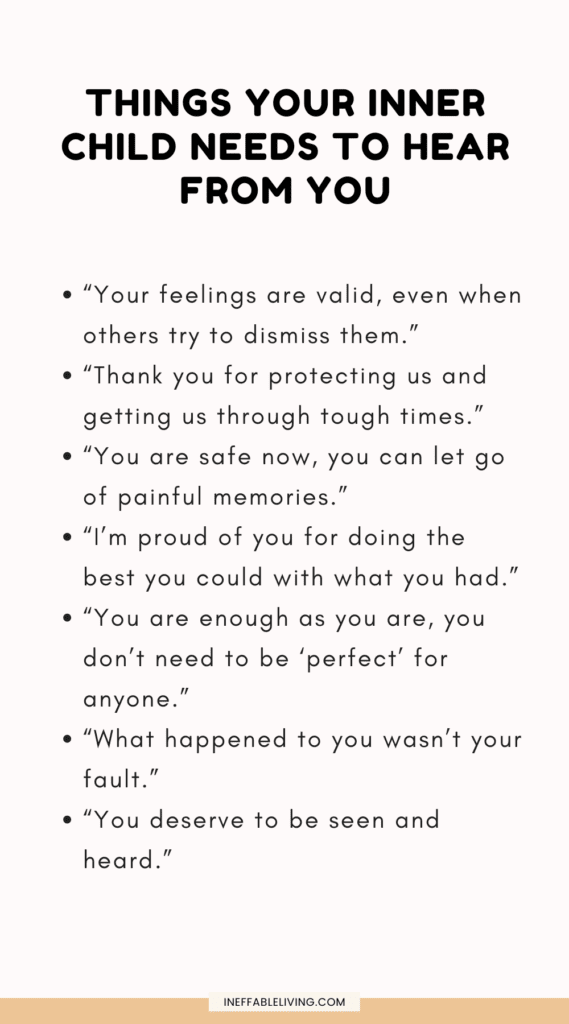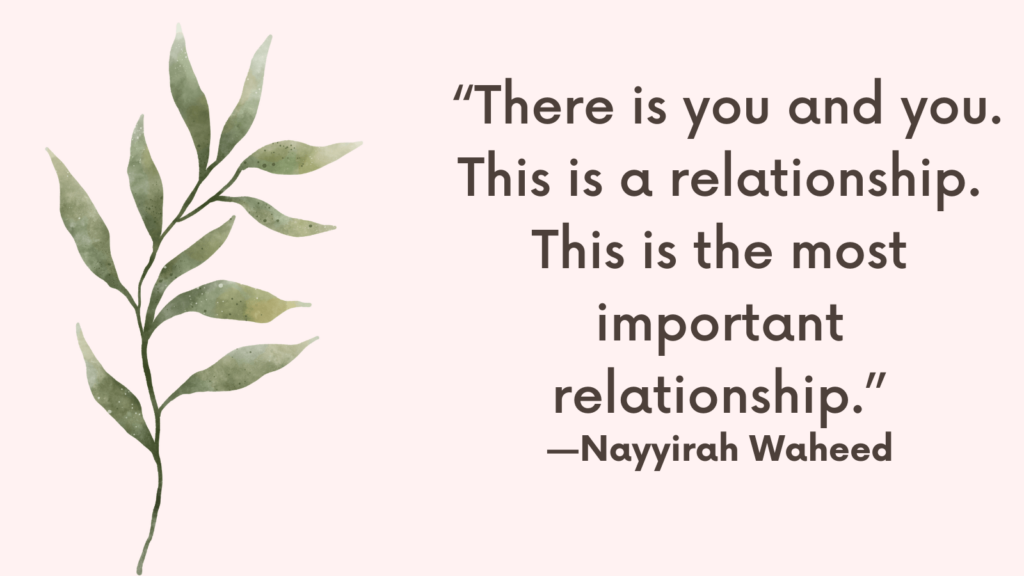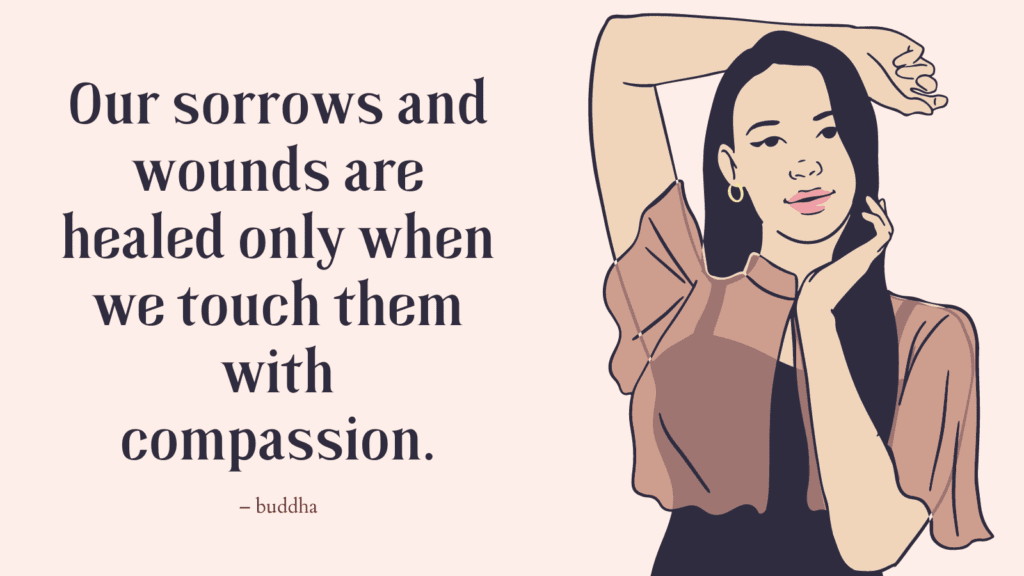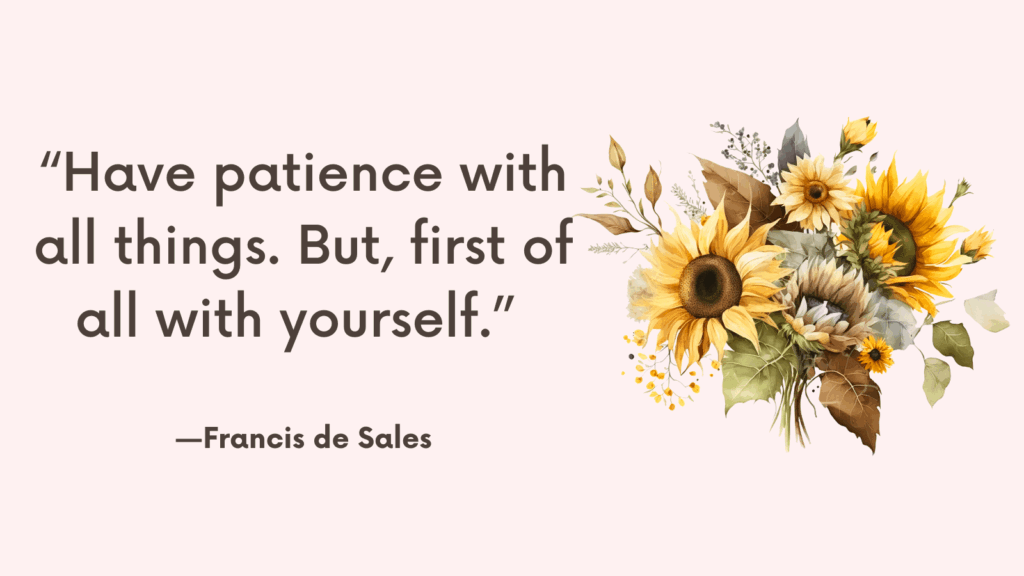This post contains lost inner child test and attachment imagery exercises to support healing your inner child wounds.
What Is A Lost Inner Child?
The term “lost inner child” refers to a part of ourselves that can become disconnected or forgotten over time.
The inner child represents our childhood self and the authentic emotions, needs, and desires we had back then.
When we experience trauma, neglect, or other challenges in childhood, we may learn to suppress or ignore our inner child as a way of coping.
This can lead to a feeling of being disconnected or lost as we grow older.
Healing and reconnecting with our inner child can be a powerful process of self-discovery and emotional healing.
Related: Best 15 Inner Child Exercises: How To Connect With Your Inner Child (& Heal Your Childhood Wounds)
Lost Inner Child Test
Results
#1. Do you struggle with low self-esteem?
#2. Do you often worry that the people in your life will eventually leave you?
#3. Do you often feel guilty standing up for yourself?
#4. Do you constantly criticize yourself for being inadequate or unworthy?
#5. Do you feel ashamed of expressing strong emotions like anger or sadness?
#6. Do you find it difficult to trust yourself and other people?
#7. Are you an addict or have been addicted to something?
#8. Do you prioritize other people’s needs over your own?
If you answered “yes” to any of these questions, your inner child might be wounded and need healing.
Healing Lost Inner Child Using Attachment Imagery
Happy childhood memories, starting even in utero, are associated with emotional well-being in older adults.
But what if you don’t have fond recollections of your primary caregivers?
Insights and understanding what happened in the past can heal the thinking and verbal regions of the brain, but that’s not enough to heal from trauma.
This is where imagery comes. Imagery targets the right side of the brain. That is the visual, emotional, and visceral parts of the brain.
The following exercises will help you use imagery to strengthen and stabilize the nervous system, and rewire the brain.
Before We Begin: Approach Imagery With An Open Mind And Heart.
You might feel uncomfortable imagining things that do not square with your real-life experience. Remind yourself that in imagery, anything is possible and that with repetition, the new image become stronger.
Cultivate curious attitude when trying to create a new experience. Then see what happened. Notice how imagery makes you feel and what changes occur inside of you.
Also, try doing these exercises in a relaxed, receptive state.
Find a safe place where you won’t be disturbed and make yourself comfortable. If closing your eyes is not comfortable, you can simply lower your gaze.
Exercise 1. In Utero Imagery
Studies show that in the third trimester of pregnancy, infants can hear their mother’s voice and experience physical sensations.
Instructions
Imagine being an infant in your mother’s womb.
Imagine your mother resting on her bed feeling content, loved and supported by your father.
You hear her humming as she daydreams about all the things she wants to experience with you when you arrive.
Feel her happiness as she anticipates your arrival.
Imagine your body nestling comfortable in her safe, warm womb. Hear your mother’s heartbeat and the other sounds of her body.
Notice what is happening in your body. What emotions are you feeling now?
Related: Top 13 Signs You Are Healing From Trauma (& How To Build Emotional Resilience)
Exercise 2. Mother–Newborn Imagery
Although children don’t understand words in the first months of their life, they can feel nonverbal communication.
Instructions
Imagine that you are a newborn in a pleasant, cozy room.
Imagine a loving mother who is warm and soothing. Sense that she’s happy to have you here in the world.
Hear her soothing voice and sense her affectionate touch.
Allow yourself to peaceful and calm knowing that you can trust her and that she will take care of you.
Sense her heartbeat and warm breath. Enjoy her smell and imagine her enjoying your baby smell.
See the expression on her kind face. Feel the connection as you exchange loving gazes.
Notice what is happening in your body. What emotions are you feeling now?
Related: Inner Teenager Healing: 14 Proven Exercises to Heal Your Inner Teenager

Exercise 3. Loving-Messages Imagery
Messages children receive early on in life, become beliefs later in life. When the child receives the message that they are loved, they grow up believing they’re lovable.
Instructions
Imagine that you are three years of age.
At this stage, the verbal areas of the brain are developing. The messages you hear may be understood in a literal sense, but the nonverbal message (the tone of voice, gestures, facial expressions, posture) are imprinted.
Imagine yourself in a cozy, pleasant room playing with two loving parents beside you.
Imagine their facial expression and tone of voice that let you sense that they’re enjoying having you around. Let that knowing make you feel safe and calm.
They fully present with you and you feel cared for and loved.
Imagine the loving messages they tell you. Sense the love in their voice as they tell you, “We’re so glad you’re here,” “You are precious.”
Imagine them embracing you in a loving, warm hug as they say these messages.
Notice what is happening in your body. What emotions are you feeling now?
Exercise 4. New Sibling’s Arrival Imagery
A new sibling’s arrival can leave us feeling neglected. This imagery can help you if you felt neglected as a child.
Instructions
Imagine that a new sibling was born and is coming home from the hospital.
Imagine your mother rushing to you and hugging you as soon as she comes home and feel her delight.
Imagine her telling you how much she missed you and asking you if you’d like to meet your baby brother (or sister).
Hear your mother saying to you, “We love you. Even when we welcome more children, we will always love you the same.”
Feel her loving words and allow yourself to enjoy your new sibling, knowing that you are always cared for.
Notice what is happening in your body. What emotions are you feeling now?
Related: Undermothered: How to Mother Yourself Using These Practical 10 Strategies?

Conclusion
The inner child is a direct representation of yourself in your early years.
Ideally, the inner child would represent playfulness and fun. However, not everyone associates their childhood with playfulness.
If you experienced trauma of any kind, your inner child may seem vulnerable, small, and afraid.
Unless you seek healing, your inner child wounds can negatively affect the quality of your life now.
FAQ
Why is understanding the inner child important?
Understanding your inner child can help you develop self-awareness and gain insight into unresolved emotional wounds from childhood.
It allows you to recognize and address any negative patterns, beliefs, or behaviors that may have originated during that time.
How can I connect with my inner child?
Connecting with your inner child involves creating a safe and nurturing space within yourself.
You can do this through activities such as journaling, visualization exercises, engaging in playful activities, or seeking guidance from a therapist specializing in inner child work.
Related: Best 15 Inner Child Exercises: How To Connect With Your Inner Child (& Heal Your Childhood Wounds)
Can healing the inner child improve my overall well-being?
Yes, healing the inner child can lead to improved emotional well-being and personal growth.
It can help release past traumas, increase self-compassion, foster healthier relationships, and enhance overall life satisfaction.
Are there specific therapeutic techniques for working with the inner child?
Yes, there are various therapeutic techniques for inner child work.
Some examples include inner child dialogues, guided imagery, art therapy, and somatic experiencing.
Related: Top 25 Inner Child Journal Prompts To Heal Your Inner Wounds
How does the inner child influence my adult life?
The experiences and emotions we had as children can shape our beliefs, behaviors, and relationships in adulthood.
Unresolved issues from childhood can manifest as self-sabotaging patterns, difficulties in communication, or emotional reactivity.
Understanding and healing the inner child can help break these patterns and promote healthier functioning.
What are some common barriers to healing the inner child?
Some common barriers to healing the inner child include fear of facing painful emotions, shame or guilt associated with past experiences, and a lack of self-compassion.
It’s important to be patient and gentle with yourself as you navigate this process, and seek support if needed.
Related: Top 10 Signs Of Toxic Shame In A Person (+Best 20 Healing Shame Exercises)
Can reconnecting with my inner child help me find joy and playfulness?
Absolutely! Reconnecting with your inner child can help you tap into a sense of joy, playfulness, and creativity.
Engaging in activities that bring you joy, such as hobbies, art, or spending time in nature, can help foster a deeper connection with your inner child.
How long does inner child healing take?
The duration of inner child healing varies for each individual.
It can be a lifelong process, as layers of healing and growth unfold over time.
Patience, consistency, and self-compassion are key as you navigate your personal healing journey.
FREE Inner Child Exercises PDF
References
- Carrying a Wounded Inner Child Into Your Relationships? | Psychology Today
- The Wounded Inner Child | CPTSDfoundation.org
- Health throughout the lifespan: The phenomenon of the inner child reflected in events during childhood experienced by older persons – PMC (nih.gov)
- Healing the wounded, neglected inner child of the past – PubMed (nih.gov)
- The Wounded Inner Child | CPTSDfoundation.org
- Guided Therapeutic Imagery (goodtherapy.org)







